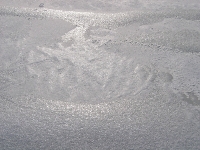Jared Tarbell and colleagues at Levitated do some very cool Flash “toys”. One neat project that shows how Flash can be used to create multiuser spaces is Public Structure | a collaborative computational environment. Some of their work has been exhibited, including the I’Ching Poetry Generator, a Levitated exhibition. I find his/their work achingly beautiful.
Arizona: Arts, Media and Engineering (Again)
Herberger College of Fine Arts is the college at Arizona State University for arts, theatre, music and dance that is collaborating with the school of engineering on the Arts, Media and Engineering research and education program that I blogged before. (See Arizona State: Arts, Media and Engineering.)
It looks like they have MFAs in Art, Dance and Theatre (and PhD in Music) each of which can have a concentration in “Interdisciplinary Digital Media” or “Interdisciplinary Digital Media and Performance”.
Chatonsky: Aesthetics of Interactivity
In issue three of intermÈdialitÈs, new journal about “history and theory of the arts, letters, and techniques”, there is an original article, Le centre d’indÈtermination : une esthÈtique de l’intÈractivitÈ by GrÈgory Chatonsky.
In it Chatonsky presents an theory of interactivity riffing on Bergson (the journal issue is titled “devenir-bergson”) and how the body is the possibility of causality and the new. He connects this to interactive art where what is new is that the “spect-acteur” have to move to cause the aesthetic experience.
In the wake

In the wake is in memory of the buried temple I came across on the Tamil coast. It is for us to give.
Shining Snow

Shining Dunes of snow is another small photo set from the holidays.
Shadowed Snow

Shadowed Snow is a small collection of photos taken this holiday in the woods of Cootes.
Learning Spaces

In the Fall we went to Ithaca and toured Cornell. I took my digital camera as I was beginning to think about learning and space. Today I finally got my pictures uploaded. They aren’t great, and the spaces are hard to parse, but it s a start, see Learning Spaces.
Theremin: Theremax
Matt Patey pointed me to a cheaper source of Theremin kits. See PAiA: Theremax theremin, the kit costs $79 USD + shipping. Now I need to come up with a reason why I need this for multimedia research.
Lightman: The Diagnosis
The Diagnosis by Alan Lightman is one of the best novels about information and philosophy I have read. The hero, who works for a company that just processes information (without apparently contributing anything – just quantity), begins to go numb in a way reminiscent of Socrates after he swallows the hemlock. Woven into the novel are the e-mail exchanges of the hero with his son who is taking a course online and a Socratic dialogue. The book is a “diagnosis” of a culture that has confused quantity of information processed with wisdom. It is Plato’s story of writing in the Phaedrus in novel form.
For an interview with the author see, identity theory | the narrative thread – alan lightman.
Continue reading Lightman: The Diagnosis
Debord: The Society of Spectacle
The Society of the Spectacle, by Guy Debord, theorizes what McLuhan in The Mechanical Bride animated – the way our society is dominated by spectacle and representation. The media is the message, and viewing the screen is the paradigmatic spectacular activity. Computer games, I would add, are way our culture has adapted to the 60s critique of media and spectacle by the likes of McLuhan and Debord. Games have sold us on manipulation.
Continue reading Debord: The Society of Spectacle